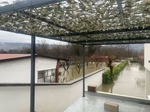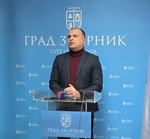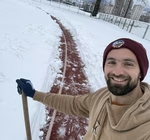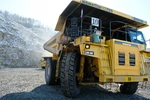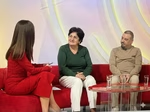
Nura Begovic was holding a watch in her hand as she was talking about her 43-year-old brother who was killed in the 1995 Srebrenica genocide. The watch had stopped at 18:35 - the time of his death.
Like most women from the area of Srebrenica, Nura crossed over to the territory of the northern town of Tuzla in 1995 which the Bosnian Serb army did not control.
She only returned to her home near the Memorial Centre in Potocari after the war.
After they executed nearly 8,000 Srebrenica men and boys, the Bosnian Serb forces buried the victims in mass graves. A few months later, they dug up the bodies and reburied them at other locations in an effort to cover up the crime.
This was mostly done with bulldozers and the machines tore up the bodies while loading them on trucks to be transported to some other location. By the time the remains were reburied into another grave, the bodies were a simple mix of people’s bones.
“My brother decided to go through the forest. He was in a group of some 1,000 people. He was going together with my husband and the husband of my sister. My husband and brother in law survived, but he (Adil) did not,” Nura said while presenting a photo of her brother and his personal belongings which were found with his remains.
She remembered her arrival in Tuzla and how she and others waited for their loved ones to join them.
“In the beginning, we waited for them to cross over to Tuzla. However, as new information would come in, we were losing hope that anyone would come there alive. My brother didn’t make it far, to Kravice. After 23 years, I received a call in November last year from the office of the Institute for Missing Persons in the RS saying that they found my brother’s remains,” she said.
“Only a few bones were found on the surface. His remains were picked up at Kostan Brdo, above Kravice. His remains and clothes were kept in that office of the Institute in the RS from 2005 until last year. Of his entire body, I only found one fist. His clothes - a shoe, a tracksuit, a watch, and keys, confirm his identity,” she explained.
But despite not finding anything but Adil’s fist, Nura decided to give her brother a proper burial at the ceremony this year.
“What his death looked like, we don’t know. We know he was killed in the most brutal way. Unfortunately, my mother is not alive to see him buried,” she said.
Nura visited most of the locations where remains were found throughout the years.
“I never stopped looking for him,” she said.
She also stressed that she will never give up on searching for the remains of all of those killed in Srebrenica.
But Nura also has a message for the families whose loved ones were already identified, but their remains were not buried as they do not want to bury only part of those remains.
She urged those families to bury their loved ones, “so that they wouldn’t be lying in identification centres.”
Currently, there are 6,610 genocide victims buried in the Srebrenica - Potocari Memorial Centre. Another 33 will join them on Thursday.
Kakvo je tvoje mišljenje o ovome?
Učestvuj u diskusiji ili pročitaj komentare





 Srbija
Srbija
 Hrvatska
Hrvatska
 Slovenija
Slovenija












